Color
Mar 27, 2021 18:10:11 #
A pixel color is defined per pixel using the HSL description/value.
Pure white, neutral grey, and black have no hue, this defines luminosity.
HSB
► Hue
► Saturation
► Brightness
HSL
► Hue
► Saturation
► Luminosity
The range of colors within an image, print or display is limited by the color space used.
Color space
► B&W
► CMYK
► Lab color Also known as L*a*b*
► Melissa
RGB
sRGB
► Complementary colors
Pure white, neutral grey, and black have no hue, this defines luminosity.
HSB
► Hue
► Saturation
► Brightness
HSL
► Hue
► Saturation
► Luminosity
The range of colors within an image, print or display is limited by the color space used.
Color space
► B&W
► CMYK
► Lab color Also known as L*a*b*
► Melissa
RGB
sRGB
► Complementary colors
Mar 27, 2021 18:10:58 #
B&W
A black and white image is simply an image created by pixels using only luminance to create an image.
The luminance value determines how light or dark a pixel is, creating a grey scale.
Specific filters are used to create a B&W image. Read Complementary colors.
A black and white image is simply an image created by pixels using only luminance to create an image.
The luminance value determines how light or dark a pixel is, creating a grey scale.
Specific filters are used to create a B&W image. Read Complementary colors.
Mar 27, 2021 18:48:59 #
CMYK
Cyan, Magenta, Yellow, Key (black)
Color space
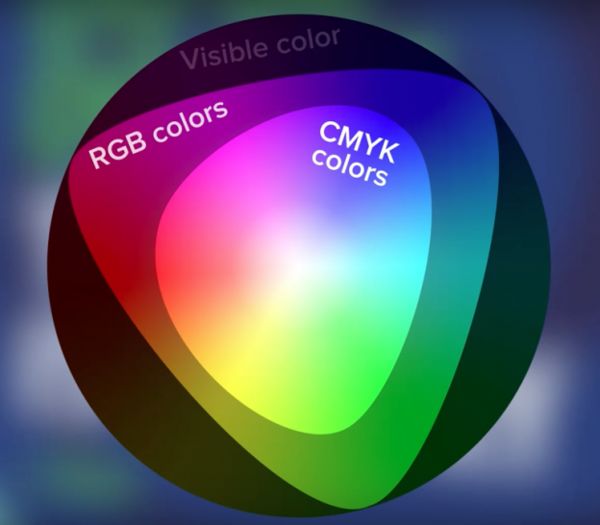
As shown, CMYK is more restrictive than RGB.
CMYK is best suited for printing. C, M, Y and K also refer to the plate used to print an image, each being pressed in turn to produce an image.
CMYK is subtractive. The center area is back, absence of colors.
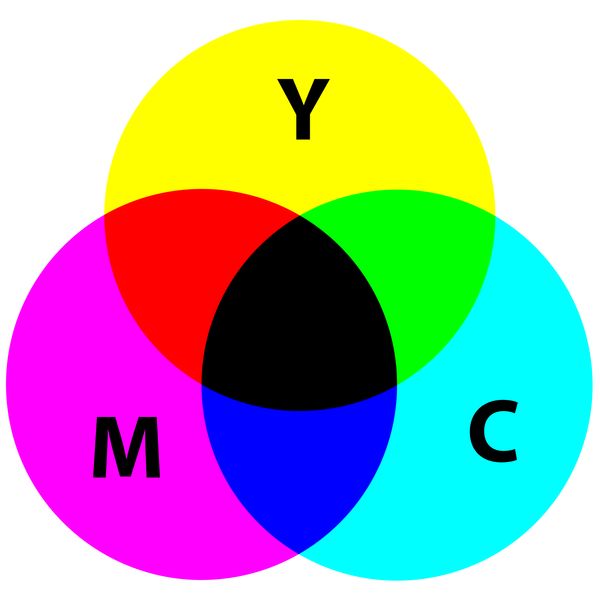
In an Inkjet printer 4 dots of different sizes are printed, sometime six with the addition of two cartridges:
C, Lc (Light Cian)
M, Lm (Light magenta)
Y
K
In this case the color mode is CcMmYK or CMYKLcLm
Cyan, Magenta, Yellow, Key (black)
Color space

As shown, CMYK is more restrictive than RGB.
CMYK is best suited for printing. C, M, Y and K also refer to the plate used to print an image, each being pressed in turn to produce an image.
CMYK is subtractive. The center area is back, absence of colors.

In an Inkjet printer 4 dots of different sizes are printed, sometime six with the addition of two cartridges:
C, Lc (Light Cian)
M, Lm (Light magenta)
Y
K
In this case the color mode is CcMmYK or CMYKLcLm
Mar 30, 2021 23:59:35 #
Complementary colors
Complementary colors are exact opposite of each other. This is particularly useful in B&W photography. They cancel each other and create a grayscale value.
The deeper the color the darker the effect and inversely the lighter the brighter the grayscale value.
To select a filter based on this depends on what you are looking for. Orange and Red-Orange will virtually render blue dark gray if not black. Yellow-Orange on the other end will be more nuanced. Keep in mind that the density or intensity of the color will influence the final result.
Color wheel
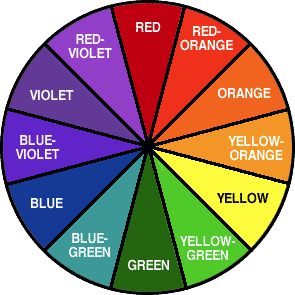
Animation showing the relationships as the color wheel turns.
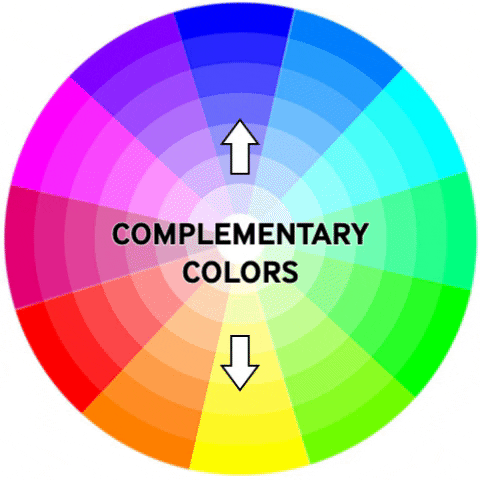
Complementary colors are exact opposite of each other. This is particularly useful in B&W photography. They cancel each other and create a grayscale value.
The deeper the color the darker the effect and inversely the lighter the brighter the grayscale value.
To select a filter based on this depends on what you are looking for. Orange and Red-Orange will virtually render blue dark gray if not black. Yellow-Orange on the other end will be more nuanced. Keep in mind that the density or intensity of the color will influence the final result.
Color wheel

Animation showing the relationships as the color wheel turns.

Apr 5, 2021 08:52:44 #
LAB Color (L*A*B*)
This is basically a three-dimensional color space created in 1940 to represent perceived light. Probably the best way to gain an understanding is to visualize each color represented on a three axis such as longitude, latitude and elevation. Think of a sphere. It is used primarily by industries that need a precise color description.
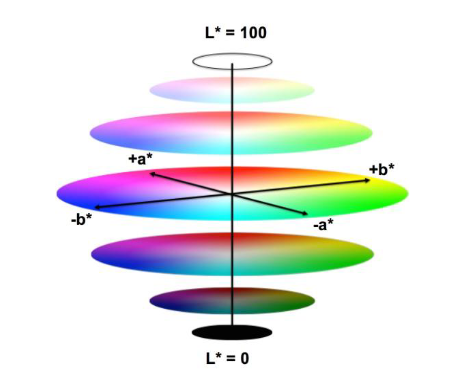
Also known as l*a*b* or L*A*B*
L* indicates lightness and a* and b* are chromaticity coordinates
L* = Luminosity (outer edge 0 = Black, 100 = White. 50 = Grey)
A* = Red/Green are opposite values Green is negative, Red is positive (Longitude)
B* = Blue/Yellow are opposite values Blue is negative, Yellow is positive (latitude)
Opposite hue saturation

Lightness

Colors are described as:
L*= ##.##
a*= (R=##).(G=##)
b*= (B=##).(Y=##)
This is basically a three-dimensional color space created in 1940 to represent perceived light. Probably the best way to gain an understanding is to visualize each color represented on a three axis such as longitude, latitude and elevation. Think of a sphere. It is used primarily by industries that need a precise color description.

Also known as l*a*b* or L*A*B*
L* indicates lightness and a* and b* are chromaticity coordinates
L* = Luminosity (outer edge 0 = Black, 100 = White. 50 = Grey)
A* = Red/Green are opposite values Green is negative, Red is positive (Longitude)
B* = Blue/Yellow are opposite values Blue is negative, Yellow is positive (latitude)
Opposite hue saturation

Lightness

Colors are described as:
L*= ##.##
a*= (R=##).(G=##)
b*= (B=##).(Y=##)
Apr 5, 2021 10:59:32 #
Hue
HUE is the 'purity' of a color.
Hue can be described as a 'degree' on a circle (check illustration)
On the HSB model H is a variable, S (Saturation) and B (Brightness) stay the same.
On the RGB model 'pure color' is determined by two channels.

Arrows point to:
→ Black = Hue slider
→ Blue = Dominant color
→ Yellow = Secondary channel
Notice that the dominant stays fully saturated (255) and switch from R to B to G to R.
Watch the linked MP4 to see the hue slider in action.
HUE is the 'purity' of a color.
Hue can be described as a 'degree' on a circle (check illustration)
On the HSB model H is a variable, S (Saturation) and B (Brightness) stay the same.
On the RGB model 'pure color' is determined by two channels.

Arrows point to:
→ Black = Hue slider
→ Blue = Dominant color
→ Yellow = Secondary channel
Notice that the dominant stays fully saturated (255) and switch from R to B to G to R.
Watch the linked MP4 to see the hue slider in action.
Apr 5, 2021 10:59:49 #
Saturation
Saturation is the amount of light (white) mixed to a color. It goes from pure (Saturated) to grey (desaturated - white). On the RGB mode a color will becomes a grey value when desaturated.
Using the pointer to add white (sliding the pointer along the top), notice that the dominant color stays at 255. The other two channels augment in value in order to create a lighter shade that ends in white.

Arrows point to:
→ Black = pointer
→ Blue = Dominant color
→ Yellow = Secondary channels
Saturation scale on HSB model

Saturation is the amount of light (white) mixed to a color. It goes from pure (Saturated) to grey (desaturated - white). On the RGB mode a color will becomes a grey value when desaturated.
Using the pointer to add white (sliding the pointer along the top), notice that the dominant color stays at 255. The other two channels augment in value in order to create a lighter shade that ends in white.

Arrows point to:
→ Black = pointer
→ Blue = Dominant color
→ Yellow = Secondary channels
Saturation scale on HSB model

Apr 5, 2021 11:00:10 #
Brightness

Arrows point to:
→ Black = pointer
→ Blue = Dominant color
→ Yellow = Secondary channel
Brightness scale on the HSB model


Arrows point to:
→ Black = pointer
→ Blue = Dominant color
→ Yellow = Secondary channel
Brightness scale on the HSB model

Apr 5, 2021 11:00:38 #
Melissa
► Melissa is a hybrid color space used in Lightroom. You will not find it anywhere else. No other color space is offered in LR.
► Melissa RGB utilizes the ProPhoto color spectrum and applies the Gamma curve from sRGB, providing the best of both Color Spaces. (Source)
► Melissa Moore is responsible for the development of the color space, hence the name Melissa.
► Melissa is a hybrid color space used in Lightroom. You will not find it anywhere else. No other color space is offered in LR.
► Melissa RGB utilizes the ProPhoto color spectrum and applies the Gamma curve from sRGB, providing the best of both Color Spaces. (Source)
► Melissa Moore is responsible for the development of the color space, hence the name Melissa.
Apr 7, 2021 20:12:46 #
Luminosity
► In digital photography luminosity is a greyscale that represents hue and saturation by their combined grey value.
► Different colors can have the same grey value.
► The scale goes from pure white to black, essentially Saturation plus Brightness.
► In digital photography luminosity is a greyscale that represents hue and saturation by their combined grey value.
► Different colors can have the same grey value.
► The scale goes from pure white to black, essentially Saturation plus Brightness.
If you want to reply, then register here. Registration is free and your account is created instantly, so you can post right away.
